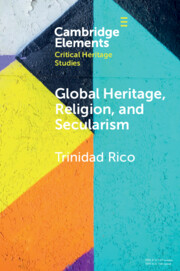Element contents
Global Heritage, Religion, and Secularism
Published online by Cambridge University Press: 03 December 2021
Summary
- Type
- Element
- Information
- Online ISBN: 9781009183581Publisher: Cambridge University PressPrint publication: 16 December 2021
References
- 7
- Cited by



